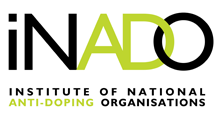18 Jun 2024
Related cases:
- AAA 2017 No. 01 17 0003 4443 USADA vs Gil Robers
July 10, 2017
- CAS 2017_A_5296 WADA vs Gil Roberts
January 25, 2018
In October 2023 the United States Anti-Doping Agency (USADA) reported an anti-doping rule violation against the Athlete Gil Roberts after his sample tested positive for the prohibited substances Enobosarm (Ostarine), LGD-4033 (Ligandrol), RAD140 and SR9009.
Previously in June 2017 the Athlete established No Fault or Negligence when he tested positive for Probenecid. However in December 2022 he accepted a 16 month period of ineligibility for the presence of the prohibited substances Andarine and Ostarine.
Following notification a provisional suspension was ordered. The Athlete filed a statement in his defence and he was heard for the New Era Arbitration Tribunal.
USADA contended that the test result was valid and that the presence of multiple prohibited substances had been established. Accordingly USADA deemed that the Athlete intentionally had committed a third anti-doping rule violation.
The Athlete denied the intentional use of these substances and requested for a reduced sanction. Yet, he could not explain how these substances had entered his system.
He asserted that after the previous cases he was targeted by USADA and he disputed the UCLA Laboratory and the validity of the test result. Further he claimed that he was denied an opportunity to have his B sample tested.
The Sole Arbitrator assessed and addressed the evidence and the issues raised by the Parties and determines that:
- There were no departures of the ISL in the analysis of the Athlete's sample.
- The Athlete failed to provide any evidence that the UCLA Laboratory had departed from the ISL.
- The Athlete did not request that his B sample be opened and analysed within the set deadline.
- There is no evidence that he was subject to excessive testing as a form of retaliation or harassment on the part of USADA.
- The Athlete committed a second anti-doping rule violation and there are no grounds for a reduced sanction.
- The Athlete failed to establish that the violation was not intentional, nor how these substances had entered his system.
Therefore the Arbitration Tribunal decides on 18 June 2024 to impose an 8 year period of ineligibility on the Athlete, starting on the date of the provisional suspension, i.e. on 17 October 2023.
